BRIGHT KIDS, POOR GRADES:
AND WHAT YOU
CAN DO ABOUT IT1
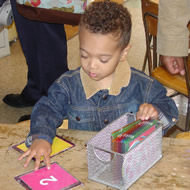 My third edition of Why Bright Kids Get Poor Grades celebrates
more than 30 years of developing and using the Trifocal Model to reverse Underachievement Syndrome for capable children who are not working to their
abilities in school. While this new edition continues to provide the same principles that have reversed underachievement for thousands of children,
I’ve added sections that reflect information that has been gleaned from my clinical experiences, my research and that of others, and the successful
experiences of other educators and parents.
My third edition of Why Bright Kids Get Poor Grades celebrates
more than 30 years of developing and using the Trifocal Model to reverse Underachievement Syndrome for capable children who are not working to their
abilities in school. While this new edition continues to provide the same principles that have reversed underachievement for thousands of children,
I’ve added sections that reflect information that has been gleaned from my clinical experiences, my research and that of others, and the successful
experiences of other educators and parents.
As a psychologist who has worked directly with families and educators, I find that whenever I give a presentation or workshop, at least one—and sometimes more than one—teacher or parent takes me aside to thank me for making a difference for their child or student. For me, this is an awesome experience and it motivates me to continue working with underachievers as well as to disseminate my work.
Reversing underachievement is more than just about achievement. It’s really about guiding children toward leading fulfilled lives. My work is for parents who value achievement in their children and for the teachers who are challenged to motivate all students. Although Underachievement Syndrome continues to be epidemic, with your help and knowledge we can motivate and inspire children to achieve, feel good about themselves, and make contributions to our society that needs their contributions. I hope you will use this information to both prevent and reverse Underachievement Syndrome in your classroom and/or in your home.
WHAT IS UNDERACHIEVEMENT
SYNDROME?
What is underachievement and what causes it? There is no gene for underachievement. Instead, underachieving children seem not to have learned the process of achievement—in fact, they have learned to underachieve.
 Underachievers are often disorganized, dawdle,
forget homework, lose assignments, and misplace books. They daydream, don’t listen, look out the window, or talk too much to other children.
They have poor study skills—or none at all. They have innumerable excuses and defenses. School is boring when they are young, irrelevant when
they are older. The boredom or irrelevance is constant and tends to be unrelated to the actual assignments. They blame their poor grades, which they
say don’t matter, on “terrible teachers.” They think that drama, sports, music, or, in particular, having a good social life is more
important than school work.
Underachievers are often disorganized, dawdle,
forget homework, lose assignments, and misplace books. They daydream, don’t listen, look out the window, or talk too much to other children.
They have poor study skills—or none at all. They have innumerable excuses and defenses. School is boring when they are young, irrelevant when
they are older. The boredom or irrelevance is constant and tends to be unrelated to the actual assignments. They blame their poor grades, which they
say don’t matter, on “terrible teachers.” They think that drama, sports, music, or, in particular, having a good social life is more
important than school work.
Underlying these children’s poor study habits, weak skills, disorganization, and defensiveness is a feeling of a lack of personal control over their educational success. Underachievers aren’t really certain that they can achieve their goals even if they work harder. They lack self-efficacy.
 These children set their goals either too high
or too low, and as a result, they guarantee failure. They want to be millionaires, professional football players, inventors of computer games, rockstars,
Olympic gymnasts, or presidents, and they have magical ideas about the effort necessary to arrive at these unrealistic goals. They have not yet discovered
what the word work actually means. They can’t build firm self-confidence because they haven’t learned perseverance or a real sense of
effort.
These children set their goals either too high
or too low, and as a result, they guarantee failure. They want to be millionaires, professional football players, inventors of computer games, rockstars,
Olympic gymnasts, or presidents, and they have magical ideas about the effort necessary to arrive at these unrealistic goals. They have not yet discovered
what the word work actually means. They can’t build firm self-confidence because they haven’t learned perseverance or a real sense of
effort.
Underachievers often have highly competitive feelings, but they may not be obvious. They aspire to be winners and are poor losers. If they don’t believe they can win, they may quit before they begin, or they may select only those experiences in which they are certain of victory. They are competitive, internally pressured children who have not learned to cope with defeat.
WHAT DO UNDERACHIEVERS
LOOK LIKE?
Underachievers come in many varieties, and although they are truly individual, they often fit into prototypical categories. In real life, the prototypes are not pure in any one child but are blended. The Inner Circle figure from my book Why Bright Kids Get Poor Grades will help you to identify if you have an underachiever in your home or classroom. These children have not learned to work hard or persevere. They have not learned to cope withcompetition and avoid full school effort by making excuses.
THE INNER CIRCLE OF ACHIEVERS
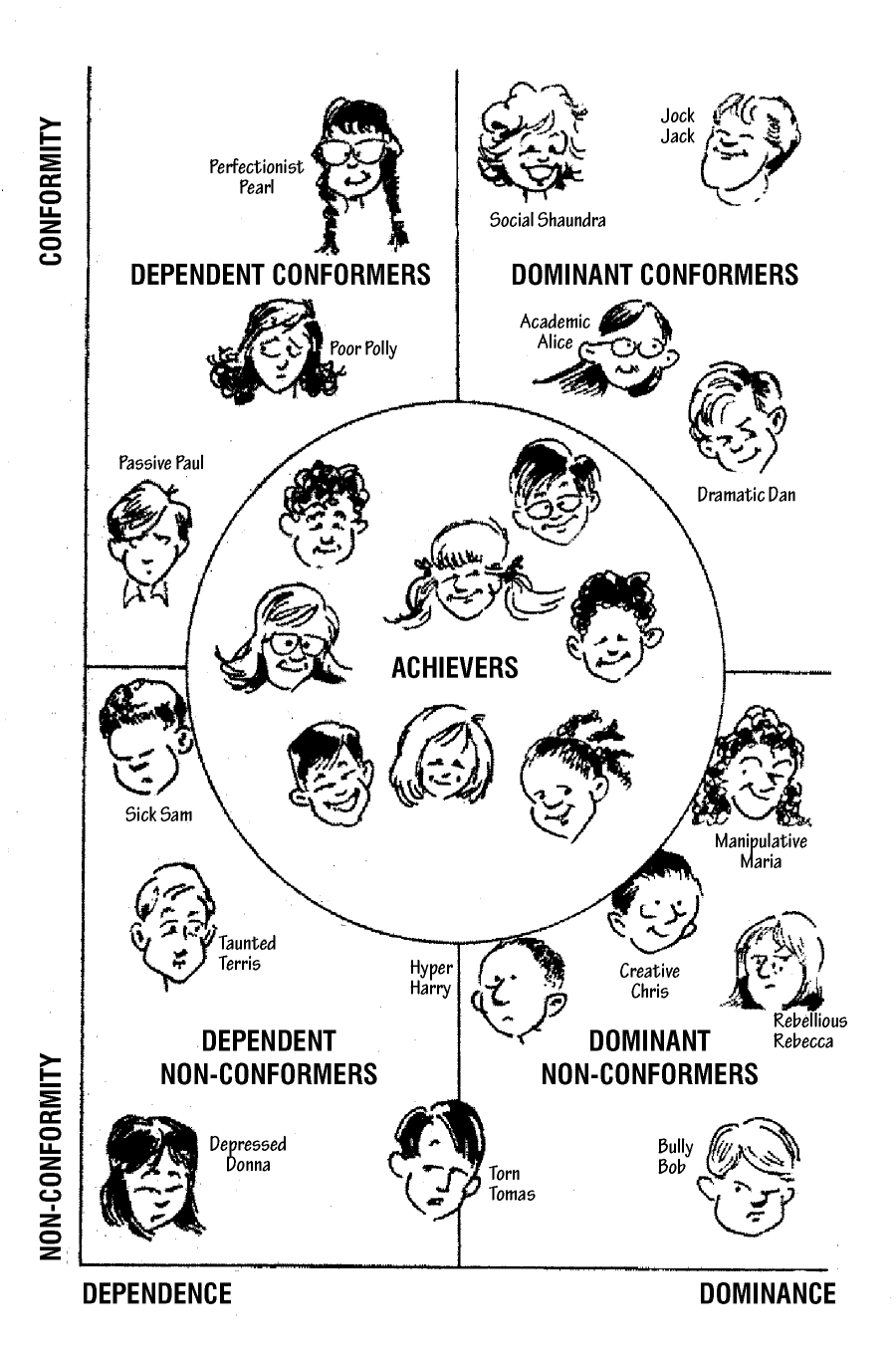
HOW YOU CAN REVERSE UNDERACHEIVEMENT SYNDROM
USING THE TRIFOCAL MODEL
At Family Achievement Clinic, we are able to reverse underachievement in roughly four out of five children by using a three-pronged approach. We call it the Trifocal Model because it focuses on the child, the parents, and the school.
Many schools have also used the Trifocal Model with excellent success. It has been utilized effectively in regular school programs, programs at under performing schools, special education and gifted programs, and for children in kindergarten through Grade 12. It has also been used with college students.
The Trifocal Model includes six steps, of which the first five apply to all underachievers. In step six, which is divided into three types of underachieving children, you will select the ideas that most apply to your underachieving child or student. See the figure below illustrating the Trifocal Model. The full model and strategies are described in Why Bright Kids Get Poor Grades.
TRIFOCAL MODEL FOR CURING UNDERACHIEVEMENT SYNDROME
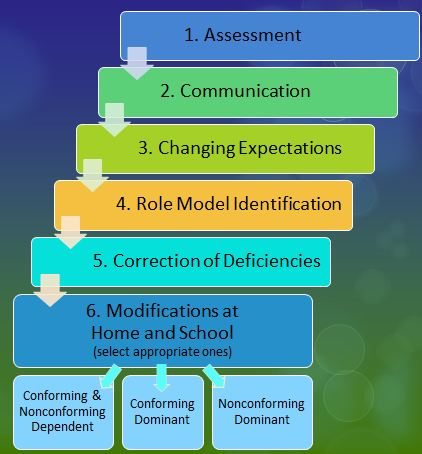
ADAPTING THE TRIFOCAL MODEL FOR DISADVANTAGED STUDENTS
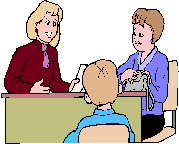 While ideally the Trifocal Model should include
parent involvement, sometimes parents either refuse to get involved or are experiencing difficult life events that prevent their becoming involved.
Students whose parents cannot participate in the model for reversing underachievement are defined as disadvantaged for the purpose of reversing their
underachievement.
While ideally the Trifocal Model should include
parent involvement, sometimes parents either refuse to get involved or are experiencing difficult life events that prevent their becoming involved.
Students whose parents cannot participate in the model for reversing underachievement are defined as disadvantaged for the purpose of reversing their
underachievement.
Students will need an adaptation of the Trifocal Model that a school in Colorado facetiously termed “the bifocal version” of the Trifocal Model. Most steps of the model are similar to the original Trifocal Model, but a “child advocate” substitutes for the parent reinforcement role and meets with the student weekly to monitor progress. Also, instead of the typical homework routine that parents conduct, an after-school study club can be instituted where students complete all their homework under teacher supervision. These two modifications make the model very effective for disadvantaged students, despite the lack of active parent involvement.
STRATEGIES FOR REVERSING UNDERACHIEVEMENT
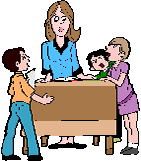 Listed below are strategies from my new book,
Why Bright Kids Get Poor Grades. Parents and teachers can select and implement those that most apply:
Listed below are strategies from my new book,
Why Bright Kids Get Poor Grades. Parents and teachers can select and implement those that most apply:
- Easing Perfection
- Independent Homework
- Teaching Concentration
- Goal-Directed Tutoring
- Multiple Methods for Giving Instructions
- Teaching a Growth Mindset
- Building Resilience through Biography
- Teaching Organizational Strategies
- Teaching Other Children
- Reversing Early Childhood Dominance
- Avoiding Confrontations
- Differentiating Curriculum
- Building Task Value
- Teaching Healthy Competition
- Teaching to the Emotional Needs of Students
- Organizational Skills
- Encouraging Activities with Intrinsic Interest
- Coping With Emotional Ups and Downs
- Anti-Arguing Instructions
- Giving Them Power and an Audience
- Avoiding Student Manipulations
- Changing Academic Grouping
- Helping Students Find Balance
- Appealing to Altruism
The ALLIANCE Acrostic briefly summarizes the strategies that can be used for reversing underachievement. Your ability to inspire and engage students, as well as your patience, is most helpful!
ALLIANCE FOR REVERSING STUDENT UNDERACHIEVEMENT
Ally with the student privately about interests and concerns.
Listen to what the student says.
Learn about what the student is thinking.
Initiate opportunities for recognition of the student’s strengths.
Add experimental ideas for engaging curricular and extracurricular activities.
Nurture relationships with appropriate adult and peer role models.
Consequence reasonably but firmly if student doesn’t meet commitments
Emphasize effort, independence, realistic expectations, how strengths can be used to cope with
problems and extend possibilities patiently.
1Adapted from Why Bright Kids Get Poor Grades: And What You Can Do About It (Scottsdale, AR: Great Potential Press, 2008).
©2010 by Sylvia B. Rimm. All rights reserved. This publication, or parts thereof, may not be reproduced in any form without written permission of the author.
